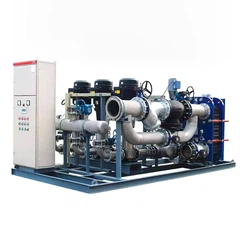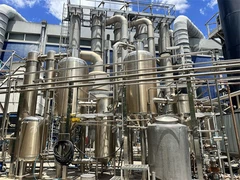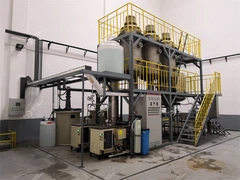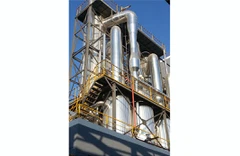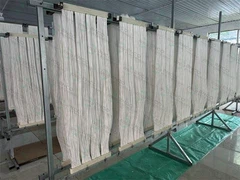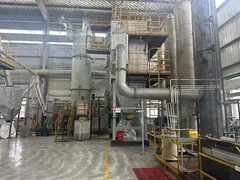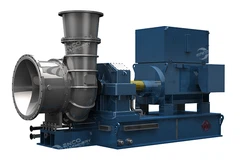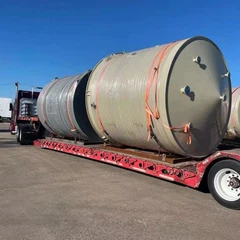How Pressure and Pumps Work Together to Improve Efficiency

Understanding how pressure influences pump performance is crucial for anyone working with hydraulic systems. In this article, we will explore the relationship between pressure and pump efficiency, focusing on hydraulic pumps and fluid dynamics.
The Basics of Hydraulic Pumps
Hydraulic pumps are devices used to convert mechanical energy into hydraulic energy. They work by moving fluid-typically oil-through a system to create flow and pressure. The generated pressure is then used to perform work, such as lifting, pushing, or rotating an object.
Types of Hydraulic Pumps
There are several types of hydraulic pumps, each designed for specific applications. The most common types include:
- Gear Pumps: Simple in design and reliable, gear pumps are used in a variety of applications.
- Vane Pumps: Known for their efficiency and smooth operation, vane pumps are often used in industrial settings.
- Piston Pumps: These pumps are highly efficient and can handle high-pressure applications.
Each type of pump responds differently to changes in pressure, affecting their performance and efficiency.

How Pressure Impacts Pump Efficiency
Pressure and Flow Rate
Pressure and flow rate are interdependent. In a hydraulic system, the pump must overcome resistance to create flow. As pressure increases, the flow rate can decrease if the pump is operating at its maximum capacity. This is because the pump must work harder to overcome the increased resistance, which can lead to inefficiencies.
Energy Consumption
Higher pressure levels can lead to increased energy consumption. As pumps work harder to maintain the desired flow rate under higher pressure, they consume more energy. This can result in higher operational costs and increased wear and tear on the pump components.
Cavitation and Pump Damage
Cavitation is a phenomenon that occurs when vapor bubbles form in a liquid due to rapid changes in pressure. These bubbles can implode, causing damage to the pump components. Operating a pump under high-pressure conditions can increase the likelihood of cavitation, leading to decreased efficiency and potential pump failure.

The Role of Fluid Dynamics
Fluid dynamics plays a significant role in how pressure affects pump performance. Understanding the principles of fluid dynamics can help optimize pump efficiency.
Viscosity and Pressure
Viscosity, or the thickness of the fluid, affects how easily it flows through the pump. High-viscosity fluids require more pressure to move, which can decrease pump efficiency. Choosing the right fluid with an appropriate viscosity for your system is essential for optimal performance.
Laminar vs. Turbulent Flow
The flow of fluid through a pump can be either laminar or turbulent. Laminar flow is smooth and orderly, while turbulent flow is chaotic and can lead to inefficiencies. High-pressure conditions can increase the likelihood of turbulent flow, which can reduce pump performance.
Strategies for Optimizing Pump Performance
To ensure that your hydraulic pumps operate efficiently, consider the following strategies:
Regular Maintenance
Routine maintenance is vital for maintaining pump efficiency. Regularly check for signs of wear and tear, leaks, and other issues that could affect performance. This will help prevent problems related to pressure changes and prolong the life of your pump.
Proper System Design
Design your hydraulic system with pressure considerations in mind. Ensure that the pump is appropriately sized for the application and that all components can handle the expected pressure levels.
Pressure Regulation
Implement pressure regulation devices, such as pressure relief valves, to maintain optimal pressure levels within your system. This can help prevent issues like cavitation and reduce the risk of damage to the pump components.
Use of Advanced Technologies
Consider using advanced technologies, such as variable displacement pumps and electronic controls, to optimize pump performance. These technologies can adjust to changing pressure conditions, improving efficiency and reducing energy consumption.
Conclusion
The relationship between pressure and pump performance efficiency is complex but critical. By understanding how pressure affects hydraulic pumps and considering fluid dynamics principles, you can optimize your system for better performance and efficiency. Regular maintenance, proper system design, and the use of advanced technologies are essential strategies for achieving optimal pump efficiency. By implementing these practices, you can ensure that your hydraulic systems operate at their best, reducing operational costs and extending the life of your equipment.


